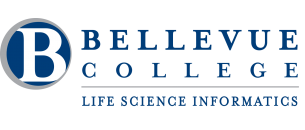3 Tips For Programming For Students

Computer programming for students is becoming increasingly popular, but what are the best methods? This article will explore C++, Python, Java, and Assembly language as four of the best programming languages for students. Listed below are three tips to get you started. Learning these languages will help your child understand the principles behind each one. Then, you can apply these tips to your own programming projects and improve your child’s skills. Weigh the pros and cons of each and decide which is best for you.
C++
A course in C++ programming for students focuses on the standard C++ library, and will cover a wide range of topics in depth, such as operator overloading, const correctness, exception handling, and exception-safe design. Other topics covered in the course include advanced memory management and automated unit testing. Common idioms and accepted software engineering practices are also discussed. In addition, students will learn to write effective C++ code.
Python
A recent study showed that the learning performance of introductory computer science students using the Python programming language is significantly higher than that of their Java counterparts. The study investigated the effect of learning motivation and self-efficacy on learning performance. The results showed that students who learn the Python language have increased learning motivation and reduced maladaptive cognition. The research has several implications for computer science education. This article will highlight some of these implications and explore what factors influence students’ learning.
Java
A course in Java programming for students is a great way to learn the language. It teaches students the basics of the language, including variables, data types, and functions. Students also learn about control flow and array handling. A final module focuses on the development process, starting with design and ending with coding. Embedded activities are not visible on Internet Explorer. To make sure you are getting the most out of your course, make sure you use a modern browser.
Assembly language
The first chapter of the book should discuss Assembly language, although university students may skip ahead to that section. Even those who aren’t new to computer programming can benefit from the discussion. In addition to the basic principles of programming, students should also understand the terms used in assembly languages, such as “assembly,” and “machine code.”
Let’s start coding
The Let’s Start Coding kit is a new way to teach kids how to code. It comes with 90+ example projects that balance play, exploration, challenges, and STEM skills. It also comes with hundreds of additional projects that challenge students and provide extra learning time. Getting Smart received a free copy of the kit to review. The opinions expressed are our own. This product is recommended for students in elementary and middle school, but adults can benefit from the lessons as well.
NAO robot
This article describes the development of NAO robot programming for students. It describes the benefits of using NAO as a learning tool. This program simplifies the fundamental sciences, including mathematics and physics, and helps students understand the complexities of robot construction. In addition, the project is a great learning opportunity for students of various ages. In addition to students learning how to program a robot, this article teaches them how to use the robot as a communication interface.
